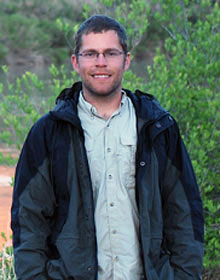
The SNR fall seminar series continues this Wednesday with a lecture by Dr. Trevor Hefley, assistant professor in the Kansas State University department of statistics, at 3:30 p.m. Oct. 5 in 107 Hardin Hall.
Hefley will present “When can the cause of a population decline be determined?”
Refreshments will be provided.
Abstract
Inferring the factors responsible for declines in abundance is a prerequisite to preventing the extinction of wild populations. Many of the policies and programs intended to prevent extinctions operate on the assumption that the factors driving the decline of a population can be determined. Exogenous factors that cause declines in abundance can be statistically confounded with endogenous factors such as density dependence. To demonstrate the potential for confounding, we used an experiment where replicated populations were driven to extinction by gradually manipulating habitat quality. In many of the replicated populations, habitat quality and density dependence were confounded, which obscured causal inference. Our results show that confounding is likely to occur when the exogenous factors that are driving the decline change gradually over time. Our study has direct implications for wild populations, because many factors that could drive a population to extinction change gradually through time.
Bio
Dr. Trevor Hefley received his B.S. and Ph.D. from the University of Nebraska–Lincoln. He is currently working on developing spatio-temporal models assessing risk factors for wildlife disease. Broadly, his research focuses on developing and applying statistical methods to inform wildlife conservation and management decisions. He is also interested in applied statistics, specifically how other disciplines such as engineering, biology, ecology and computer science utilize the large amounts of data that are currently available for decision making.
For more information, contact Katie Pekarek at kpekarek2@unl.edu.
-- Natural Resources
More details at: http://snr.unl.edu